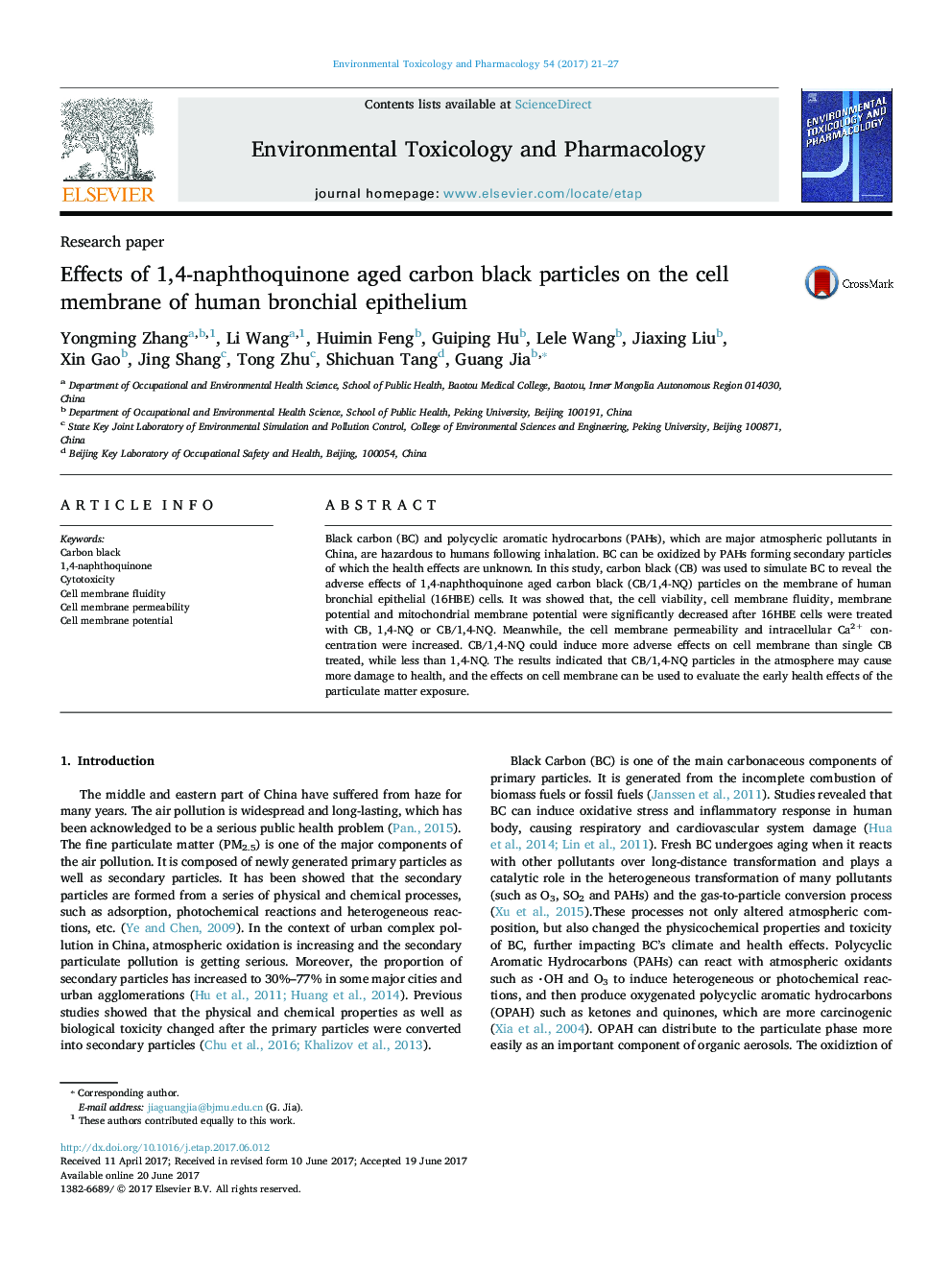| Article ID | Journal | Published Year | Pages | File Type |
|---|---|---|---|---|
| 5559734 | Environmental Toxicology and Pharmacology | 2017 | 7 Pages |
Abstract
Black carbon (BC) and polycyclic aromatic hydrocarbons (PAHs), which are major atmospheric pollutants in China, are hazardous to humans following inhalation. BC can be oxidized by PAHs forming secondary particles of which the health effects are unknown. In this study, carbon black (CB) was used to simulate BC to reveal the adverse effects of 1,4-naphthoquinone aged carbon black (CB/1,4-NQ) particles on the membrane of human bronchial epithelial (16HBE) cells. It was showed that, the cell viability, cell membrane fluidity, membrane potential and mitochondrial membrane potential were significantly decreased after 16HBE cells were treated with CB, 1,4-NQ or CB/1,4-NQ. Meanwhile, the cell membrane permeability and intracellular Ca2+ concentration were increased. CB/1,4-NQ could induce more adverse effects on cell membrane than single CB treated, while less than 1,4-NQ. The results indicated that CB/1,4-NQ particles in the atmosphere may cause more damage to health, and the effects on cell membrane can be used to evaluate the early health effects of the particulate matter exposure.
Keywords
Related Topics
Life Sciences
Environmental Science
Health, Toxicology and Mutagenesis
Authors
Yongming Zhang, Li Wang, Huimin Feng, Guiping Hu, Lele Wang, Jiaxing Liu, Xin Gao, Jing Shang, Tong Zhu, Shichuan Tang, Guang Jia,
